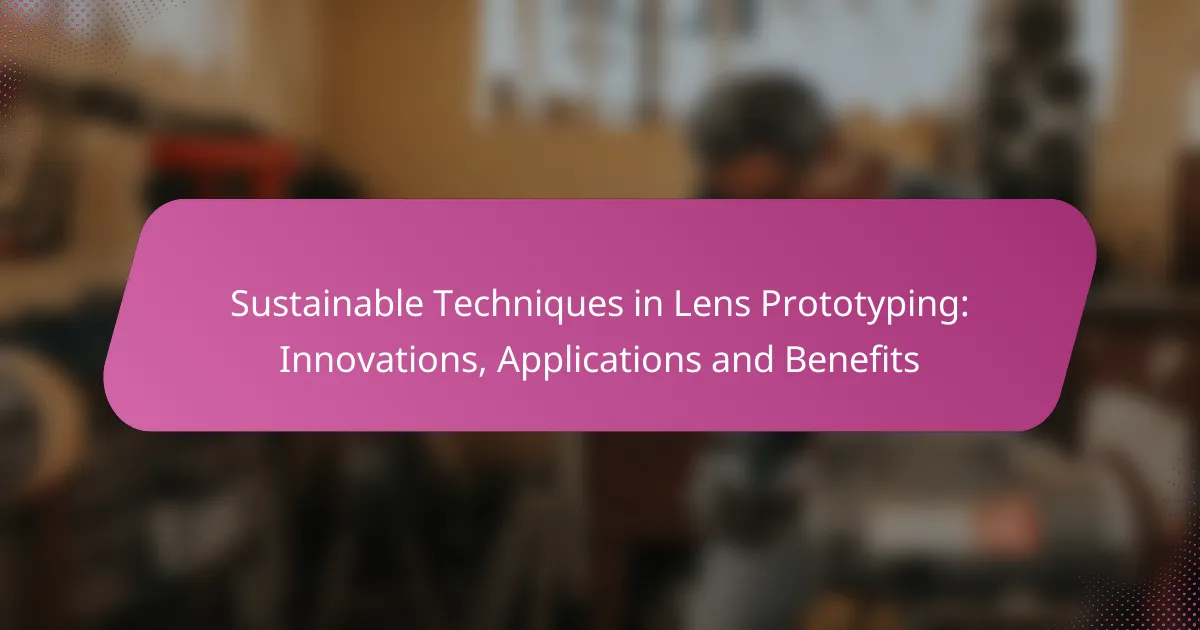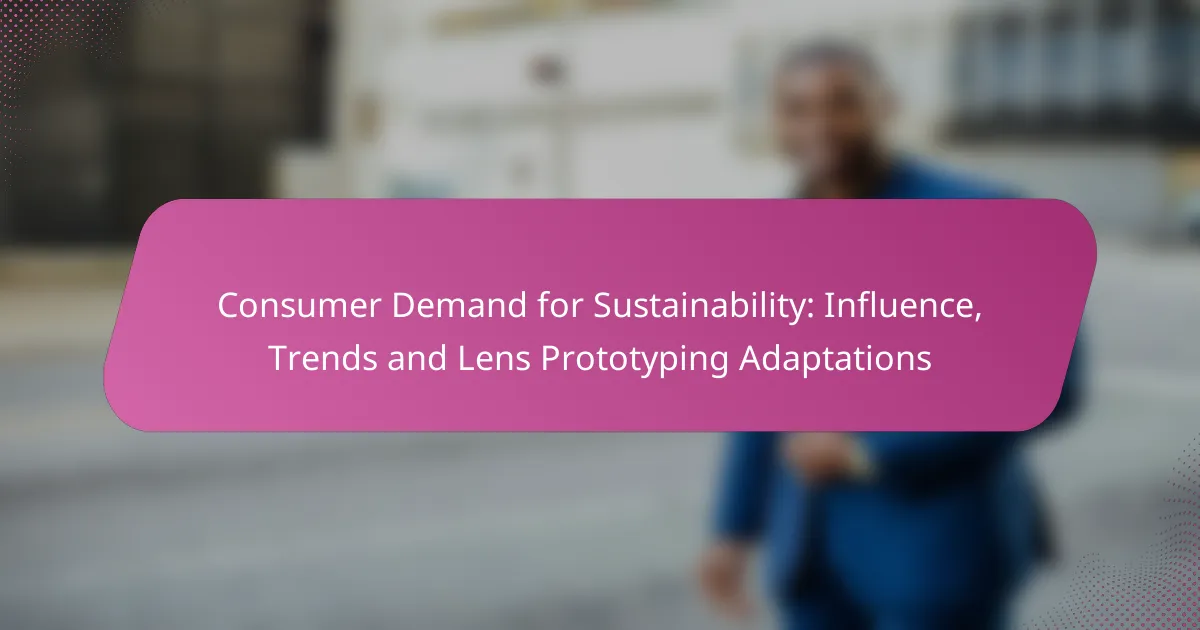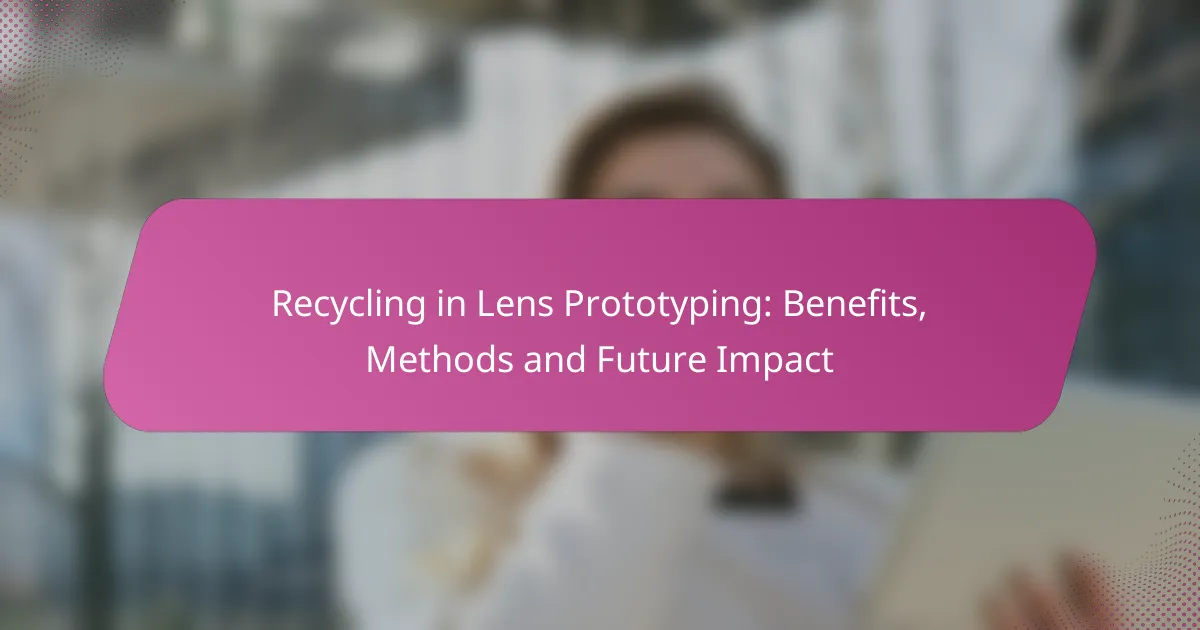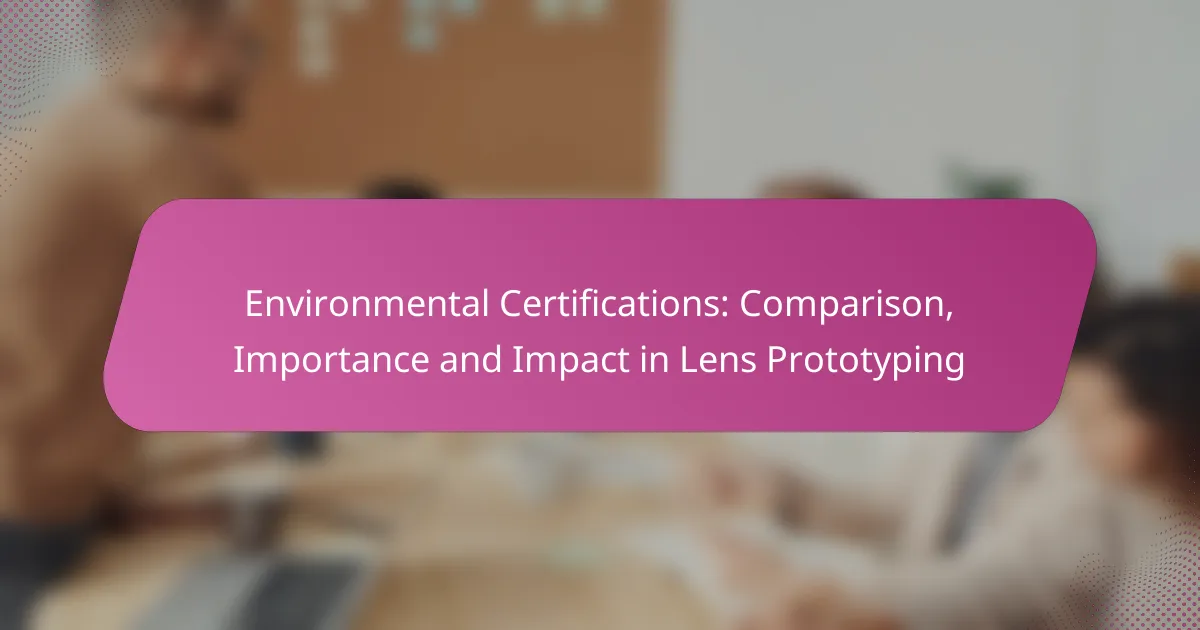Sustainable techniques in lens prototyping aim to reduce environmental impact while ensuring high efficiency and quality. By incorporating innovative materials and processes, these methods minimize waste and energy consumption, leading to significant benefits for both manufacturers and consumers.

What are sustainable techniques in lens prototyping?
Sustainable techniques in lens prototyping focus on minimizing environmental impact while maintaining efficiency and quality. These methods incorporate innovative materials and processes that reduce waste, energy consumption, and reliance on non-renewable resources.
3D printing for rapid prototyping
3D printing is a transformative technology in lens prototyping that allows for quick and cost-effective production of lens designs. This method significantly reduces material waste compared to traditional machining, as it builds objects layer by layer, using only the necessary material.
Additionally, 3D printing enables designers to create complex geometries that would be challenging or impossible with conventional methods. This flexibility can lead to innovative lens designs that enhance optical performance while reducing production time from weeks to days.
Biodegradable materials usage
Utilizing biodegradable materials in lens prototyping helps to minimize long-term waste and environmental impact. These materials can decompose naturally, reducing the burden on landfills and promoting a circular economy.
Examples of biodegradable materials include polylactic acid (PLA) and other bio-based polymers. When selecting materials, it’s essential to consider their optical properties and compatibility with existing manufacturing processes to ensure they meet performance standards.
Energy-efficient manufacturing processes
Energy-efficient manufacturing processes are crucial for reducing the carbon footprint of lens prototyping. Techniques such as optimizing machine settings, using energy-efficient equipment, and implementing lean manufacturing principles can significantly lower energy consumption.
For instance, employing automated systems can streamline production and minimize energy waste. Companies should regularly assess their energy usage and explore renewable energy options, such as solar or wind power, to further enhance sustainability in their operations.
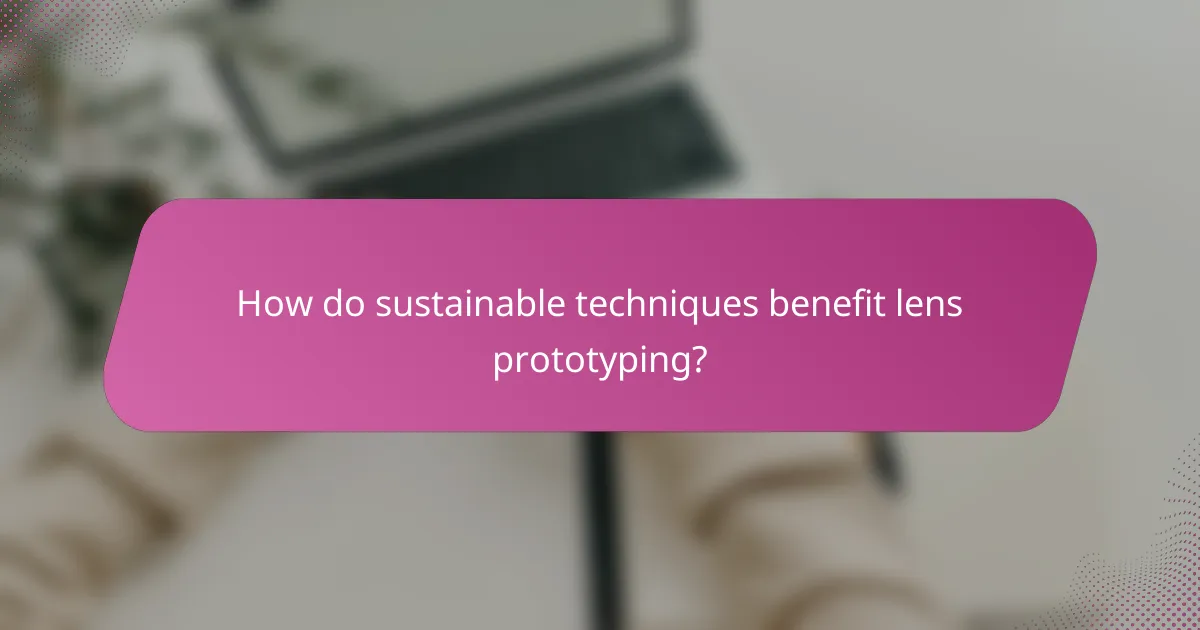
How do sustainable techniques benefit lens prototyping?
Sustainable techniques in lens prototyping provide significant advantages by minimizing environmental harm, reducing costs, and enhancing product quality. These methods focus on using eco-friendly materials and processes that lead to long-term benefits for manufacturers and consumers alike.
Reduced environmental impact
Implementing sustainable techniques in lens prototyping significantly lowers the environmental footprint. This includes using biodegradable materials and energy-efficient manufacturing processes that reduce waste and emissions. For instance, adopting renewable energy sources can cut down on carbon emissions associated with production.
Additionally, recycling and reusing materials in the prototyping phase can minimize resource extraction and landfill waste. Companies that prioritize sustainability often find that their practices align with increasing regulatory standards aimed at reducing environmental impact.
Cost savings over time
While the initial investment in sustainable lens prototyping techniques may be higher, the long-term cost savings can be substantial. Energy-efficient processes and materials often lead to lower operational costs, as they reduce energy consumption and waste disposal fees. Over time, these savings can offset the initial expenditures.
Moreover, sustainable practices can enhance brand reputation, potentially leading to increased sales and customer loyalty. Businesses that adopt eco-friendly methods may also benefit from government incentives or subsidies aimed at promoting sustainable manufacturing.
Enhanced product quality
Sustainable techniques can lead to improved product quality in lens prototyping. By using high-quality, eco-friendly materials, manufacturers can create lenses that are not only durable but also perform better in various conditions. For example, lenses made from recycled materials can exhibit superior optical properties compared to those made from traditional materials.
Furthermore, sustainable practices often involve rigorous testing and quality control, ensuring that the final products meet high standards. This focus on quality can reduce the rate of defects and returns, ultimately benefiting both manufacturers and consumers.
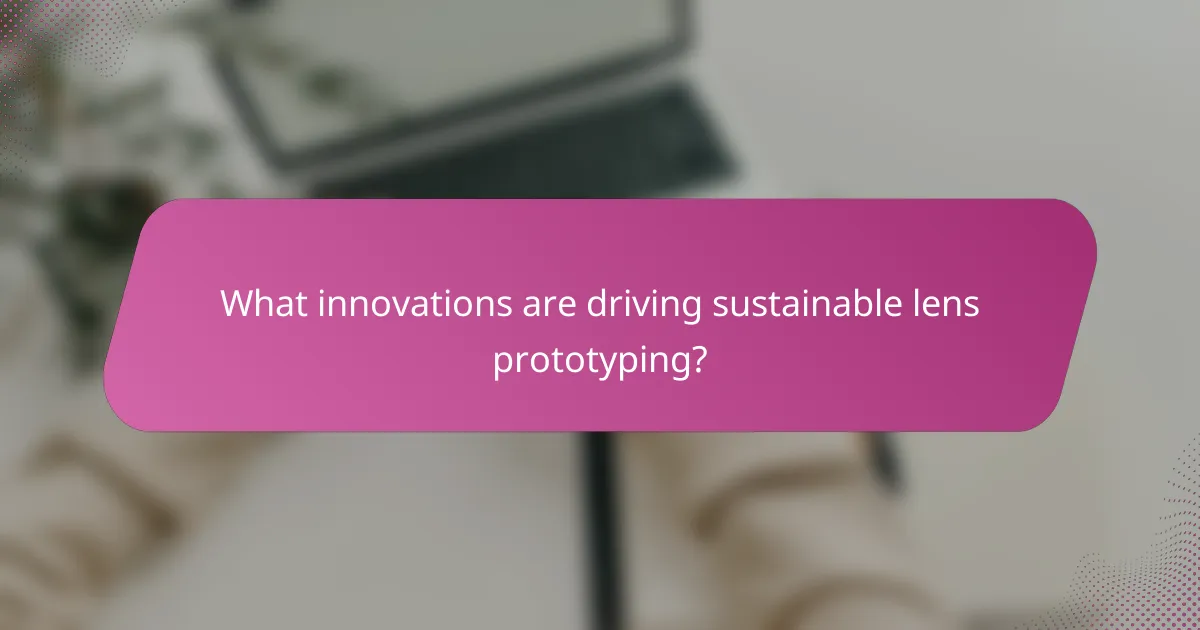
What innovations are driving sustainable lens prototyping?
Innovations in sustainable lens prototyping focus on reducing environmental impact while enhancing efficiency and performance. Key advancements include the use of recycled materials, smart manufacturing technologies, and artificial intelligence for design optimization.
Use of recycled plastics
The incorporation of recycled plastics in lens prototyping significantly lowers the carbon footprint associated with production. By utilizing materials that would otherwise contribute to waste, manufacturers can create high-quality lenses while promoting circular economy principles.
Commonly used recycled plastics include PET and polycarbonate, which can be processed to meet the stringent optical standards required for lenses. This approach not only conserves resources but also reduces the need for virgin plastic production, which is energy-intensive.
Smart manufacturing technologies
Smart manufacturing technologies, such as automation and IoT, enhance the efficiency of lens prototyping processes. These technologies allow for real-time monitoring and adjustments, minimizing waste and energy consumption during production.
For instance, advanced robotics can streamline assembly lines, while data analytics can optimize material usage. Implementing these technologies often leads to significant cost savings and improved product quality, making them an attractive option for manufacturers aiming for sustainability.
AI in design optimization
Artificial intelligence plays a crucial role in optimizing lens design, enabling more sustainable prototyping practices. AI algorithms can analyze vast amounts of data to identify the most efficient designs that minimize material use while maintaining performance standards.
By simulating various design scenarios, AI can help engineers make informed decisions that reduce waste and enhance functionality. This technology not only accelerates the prototyping process but also supports the development of innovative lens shapes that meet specific user needs.

What applications utilize sustainable lens prototyping?
Sustainable lens prototyping is increasingly applied in various sectors, including eyewear manufacturing, camera lens production, and optical instruments development. These applications focus on reducing environmental impact while maintaining quality and performance.
Eyewear manufacturing
Sustainable lens prototyping in eyewear manufacturing emphasizes the use of eco-friendly materials and processes. Techniques such as 3D printing and bio-based plastics help reduce waste and energy consumption. For instance, brands are adopting recycled materials to create frames and lenses, contributing to a circular economy.
When selecting sustainable options, manufacturers should consider the lifecycle of materials, ensuring they are sourced responsibly. Collaborating with suppliers who prioritize sustainability can enhance the overall environmental impact of the production process.
Camera lenses production
In camera lens production, sustainable prototyping techniques focus on minimizing resource use and waste generation. Innovations include using lightweight materials and energy-efficient manufacturing processes, which can lower the carbon footprint of lens production. For example, some companies are exploring the use of recycled glass in lens crafting.
Manufacturers should evaluate the trade-offs between traditional and sustainable materials, as performance and durability can vary. Implementing sustainable practices may involve upfront costs, but the long-term benefits often outweigh these initial investments.
Optical instruments development
Optical instruments development benefits from sustainable lens prototyping by integrating environmentally friendly materials and processes. This approach not only reduces waste but also enhances the performance of instruments through advanced design techniques. For example, using biodegradable polymers can improve the sustainability of microscopes and telescopes.
Developers should focus on optimizing designs for recyclability and energy efficiency. Engaging in life cycle assessments can help identify areas for improvement and ensure that sustainability goals are met throughout the development process.
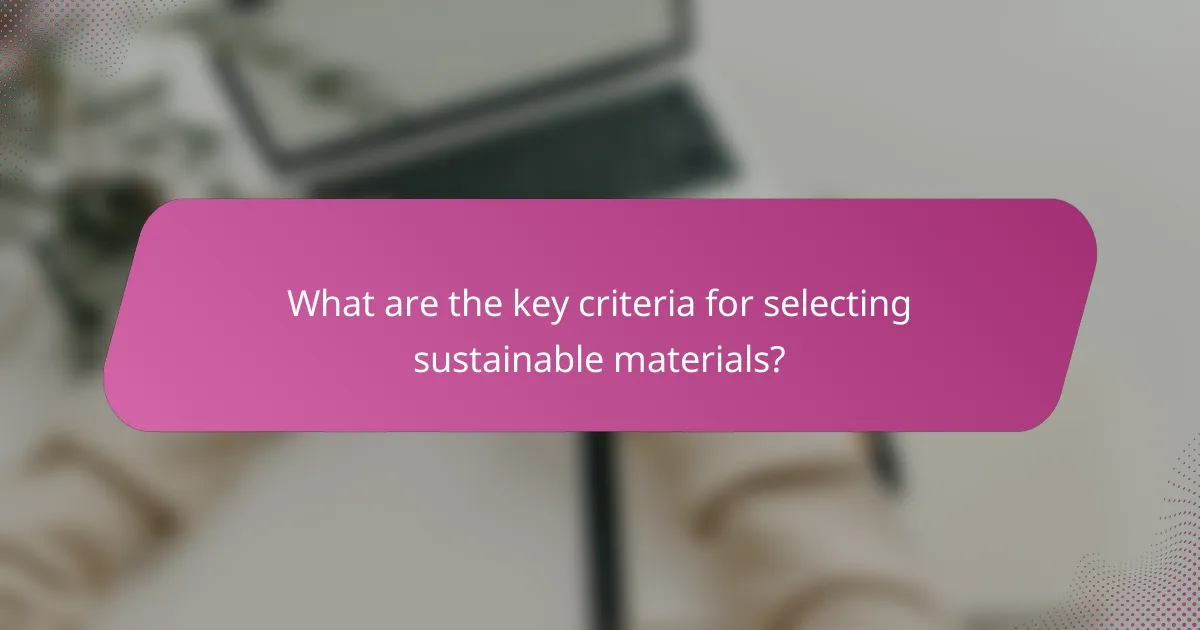
What are the key criteria for selecting sustainable materials?
Key criteria for selecting sustainable materials include their recyclability, the sustainability practices of suppliers, and compliance with environmental regulations. These factors help ensure that materials contribute to a reduced environmental footprint throughout their lifecycle.
Material recyclability
Material recyclability refers to the ability of a material to be reprocessed and reused after its initial use. When selecting materials for lens prototyping, prioritize those that can be easily recycled, such as certain plastics and metals. This not only reduces waste but also conserves resources.
Consider materials that have established recycling streams. For instance, polycarbonate and acrylic lenses can often be recycled, whereas some composite materials may not have effective recycling options available. Understanding local recycling capabilities is essential for making informed choices.
Supplier sustainability practices
Supplier sustainability practices involve the methods and policies that suppliers implement to minimize their environmental impact. When choosing suppliers for sustainable materials, assess their commitment to sustainability through certifications, such as ISO 14001, which indicates effective environmental management systems.
Engaging with suppliers who prioritize renewable energy, waste reduction, and ethical sourcing can significantly enhance the sustainability of your lens prototyping process. Establishing partnerships with suppliers that share your sustainability values can lead to more innovative and eco-friendly material options.
Compliance with environmental regulations
Compliance with environmental regulations ensures that materials meet specific legal standards designed to protect the environment. Familiarize yourself with relevant regulations, such as the EU’s REACH (Registration, Evaluation, Authorisation and Restriction of Chemicals) or similar local laws, which govern the use of hazardous substances in materials.
Choosing materials that comply with these regulations not only avoids legal issues but also enhances your project’s credibility. Regularly review and update your knowledge of regulations, as they can evolve, impacting material choices and supplier relationships.
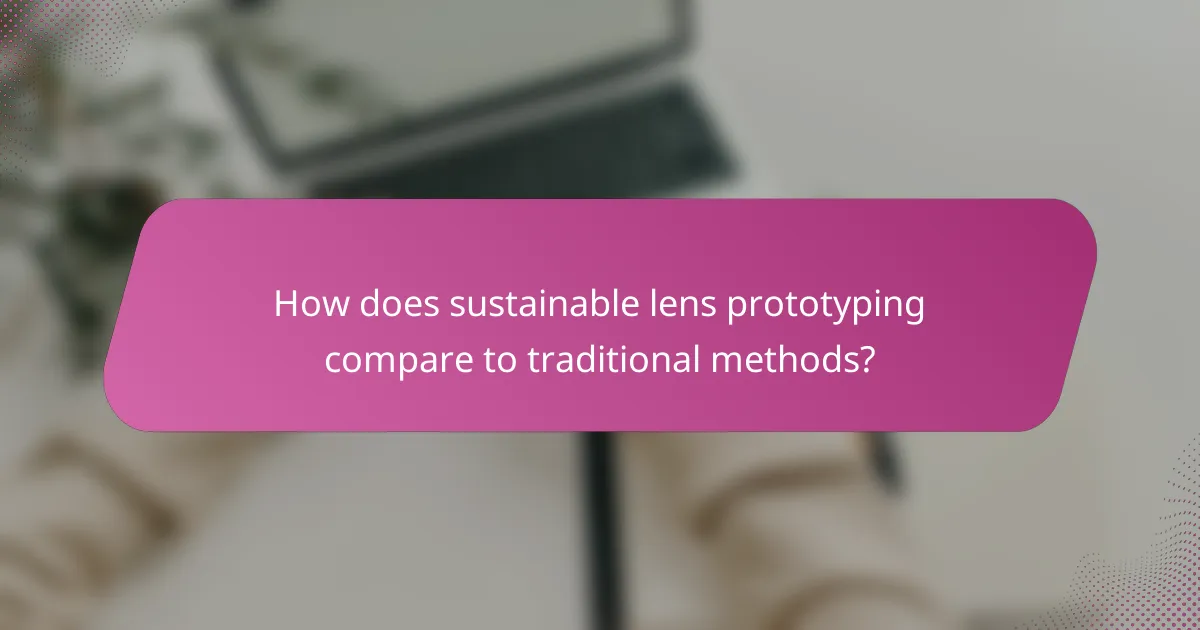
How does sustainable lens prototyping compare to traditional methods?
Sustainable lens prototyping significantly reduces environmental impact compared to traditional methods. It emphasizes eco-friendly materials and processes, leading to lower emissions and waste throughout the production cycle.
Lower carbon footprint
Sustainable lens prototyping techniques are designed to minimize carbon emissions during production. By utilizing renewable materials and energy-efficient manufacturing processes, companies can achieve a reduction in their overall carbon footprint. For instance, using bio-based plastics instead of petroleum-based materials can cut emissions by a notable percentage.
Additionally, local sourcing of materials can further decrease transportation emissions, making the entire supply chain more sustainable. Companies should consider evaluating their suppliers to ensure they align with these eco-friendly practices.
Longer product lifecycle
One of the key advantages of sustainable lens prototyping is the extended lifecycle of the products. By focusing on durability and repairability, these lenses can last significantly longer than those produced through traditional methods. This not only reduces waste but also saves consumers money over time.
For example, lenses designed with modular components can be easily repaired or upgraded, rather than discarded. Manufacturers should prioritize designs that allow for easy maintenance to enhance product longevity.
Higher initial investment
While sustainable lens prototyping offers numerous long-term benefits, it often requires a higher initial investment. The cost of eco-friendly materials and advanced manufacturing technologies can be substantial upfront. However, businesses should weigh these costs against the potential savings from reduced waste and energy consumption over time.
Investing in sustainable practices may also improve brand reputation and customer loyalty, which can lead to increased sales. Companies should conduct a thorough cost-benefit analysis to determine the financial viability of adopting sustainable lens prototyping methods.
